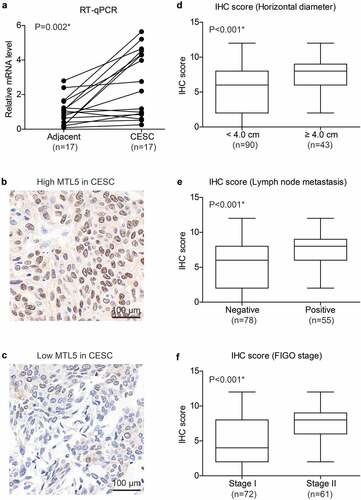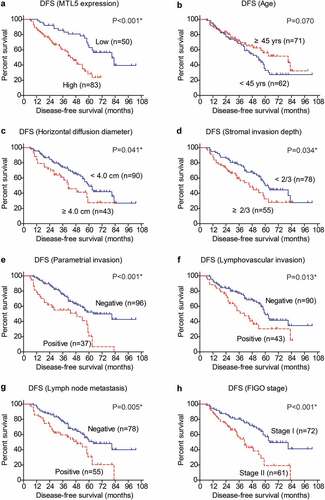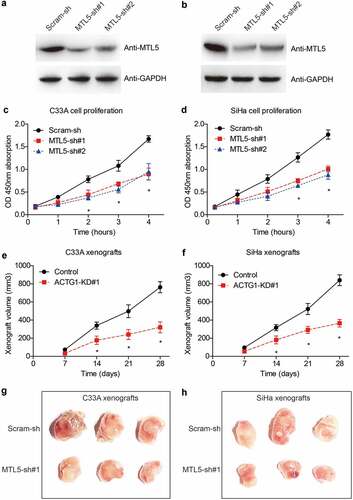Figures & data

Table 1. Correlations between MTL5 and clinicopathologic characteristics
Figure 1. mRNA and protein expression of MTL5 in CESC.

Table 2. Disease-free survival (DFS) analyses by Kaplan–Meier method and log-rank test
Figure 2. Disease-free survival analyses of CESC cohort.

Figure 3. The mRNA level of MTL5 and its clinical significance in TCGA database.

Table 3. Multivariate analysis by Cox regression model
Figure 4. The effects of MTL5 on CESC proliferation and growth.

